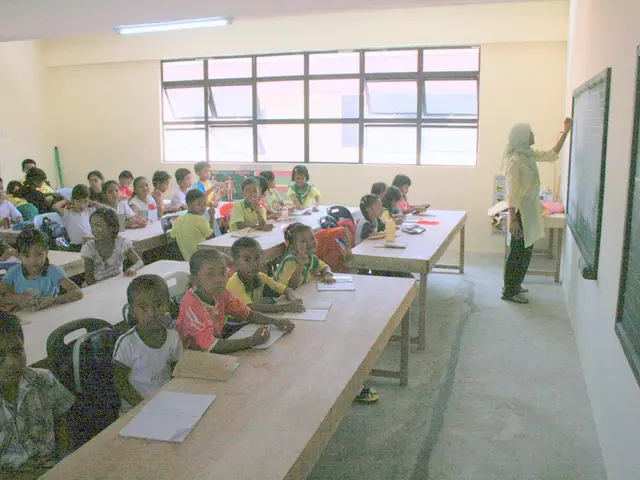Child-Focused Investment Emphasis from Impact Investing Institute and Save the Children
In early 2025, the Impact Investing Institute and children's charity Save the Children launched a year-long project to boost Child-Lens Investing (CLI). This approach intentionally considers child-related factors to advance positive child outcomes and minimize child harm.
The project aims to build a clearer picture of how CLI could be driven higher up the agenda for investors. This will be achieved through consultations with contacts in the investment industry and other stakeholder groups. The collaboration combines the Impact Investing Institute's network with Save the Children's experience and technical expertise in improving children's lives and structuring funding to do so effectively.
The UK government has shown its support for CLI with the launch of the ten-year £500m (€576m) Better Futures Fund. This fund aims to support social outcomes that improve conditions and create opportunities for vulnerable children and young people. One of the first recommendations emerging from the UK's Social Impact Investment Advisory Group, which the Impact Investing Institute supports, is the Better Futures Fund.
The project is due to finish next April, at which point, they plan to publish findings and decide how to take the work forward most effectively. The aim is to inspire new allocations from global investors to join the development finance institutions, investment managers, and social and impact investors, foundations, and family offices already taking part in CLI.
The investment landscape for CLI is diverse. For instance, PGGM, a Dutch pension fund manager, has invested €19m in energy flexibility firm Sympower. This investment falls under the categories of energy transition, funds, investment, and pension funds. Similarly, the Impact Investors have backed a Greenlandic climate and agri-tech venture.
Save the Children's impact investing arm, Save the Children Global Ventures (SCGV), has an investment portfolio that includes companies such as VIEBEG, which provides affordable healthcare products in Rwanda, Kenya, and the Democratic Republic of Congo, and Zeraki Analytics, which helps teachers in developing countries analyze academic data more effectively. These investments fall under the categories of Agri-food, Climate & environment, and Venture capital.
The MDBs (Multilateral Development Banks) delivered $137bn in climate finance in 2024, according to a report. This significant investment underscores the potential of CLI to drive positive change. The case for investors to support initiatives that directly impact children looks strong, with UNICEF citing research suggesting that every dollar invested in early childhood education generates a return of up to $17 (€14) in terms of benefits to society.
The launch of the Better Futures Fund is seen as a positive example of what child-lens investing can deliver. The foundation that co-hosted the 2025 initiative to promote Child-Lens Investing together with the Impact Investing Institute is the Criterion Institute. The project aims to inspire a shift in the investment landscape, ensuring that children's outcomes are at the forefront of investment decisions across the private and public sectors and civil society.






